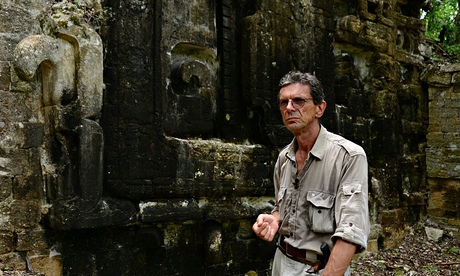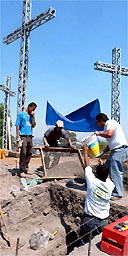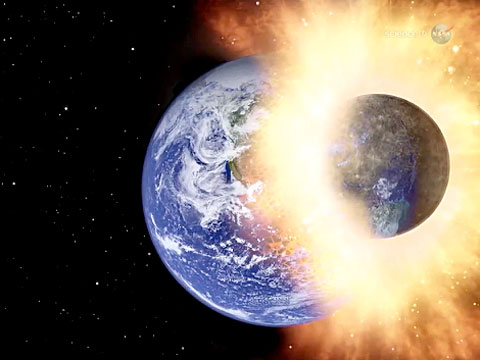There are days when Ivan Šprajc gets fed up with his job. Hacking pathways through the Mexican jungle with machetes is exhausting. Keeping a constant eye out for deadly snakes can be nerve-racking. The risk of finding nothing to show for all the effort is real.
But then there is reward that comes when the contours of a plaza, palace, ball court or pyramid emerge from beneath the tree cover, or inscriptions that could help explain them are revealed by brushing off undergrowth.
“I’ve said to myself quite a few times that this is the last season, because it is so difficult. But it is such a reward when you find a new site,” says the Slovenian archaeologist, who has made a career of finding lost Mayan cities. “It’s tough work, but it’s dead romantic.”
This year Šprajc’s team found two – Tamchén and Lagunita – which followed last year’s discovery of a large site called Chactún.
The finding of the three sites is the first step in surveying an almost unexplored area spanning about 1,200 sq miles in the northern part of the Calakmul biosphere reserve, between the Río Bec and Chenes regions, in the southern Mexican state of Campeche.
“You can call it archaeological reconnaissance,” he says. “It is the very first step into an area that is completely unknown.”
Tamchén, Lagunita and Chactún have all been dated to the 8th century, within the post-classic period that runs for the three centuries immediately before the collapse of high Mayan civilisation around AD900.
Šprajc believes the size and obvious importance of some of their buildings denote a revival of the power of smaller cities that were once subjugated to the authority of Calakmul, a great city that quickly faded after losing a war in 695 with Tikal, the other lowland Maya superpower of the classic period.
“When Calakmul falls, apparently these other cities thrive,” he says.
Beyond regional power relations, Šprajc believes the new cities could also help shed new light on the wider collapse that was to come, once they have been excavated.
A fairly solid consensus exists that prolonged drought, population pressure and an intensification of conflict were all contributing factors, but the sequence of these remains a mystery.
Already, he says, obviously modified monuments and unusual finds in the newly discovered cities suggest they might one day be the centre of new ideas about what happened to the Maya in those key centuries.
He named one of this year’s sites Tamchén, which means “deep well” in Yucatec Maya, because it is filled with deep bottle-shaped underground chambers, known as chultúns, used for storage and rain water collection. While elsewhere in the Maya world chultúns rarely go beyond six metres, in Tamchén they are as deep as 13.
Lagunita, the second site, has an impressive monster mouth facade on one of the buildings, representing an earth god related with fertility. The site had already been located in the 1970s by American archaeologist Eric Von Euw, but all that was left from that expedition were his drawings, which Šprajc immediately recognised when he rediscovered the city this year.
What stands out here, he says, is that such doorways were previously associated with the late-terminal classic period in Río Bec.
In Chactún, Šprajc’s team uncovered glyphs in stucco, rather than stone, that have never been found anywhere in the Mayan world before.
“If we are finding things that seem unique to us now, it means there are still a lot of things we don’t know about the Maya,” he says.
Šprajc began looking for lost Mayan cities in 1996, a speciality he developed after staying longer in Mexico than he had planned, because of the outbreak of war in Yugoslavia in 1991. Now back in Ljubljana, attached to the Slovenian Academy of Sciences and Arts, Šprajc returns whenever he can secure funding.
Over the years Šprajc has got used to dealing with the dangers of being in the jungle during the hectic four-month window for exploration offered by the dry season between March and June. Twice, he says, he has stumbled across jaguars. Once a puma was within a few metres. Poisonous snakes are more ubiquitous and more dangerous, he says, as well as the insects that transmit Chagas disease or leishmaniosis.
Šprajc’s first expeditions focused on an area close to the Belize border where the existence of small settlements meant local people could guide him to ruins they knew were on their land.
When he moved his explorations west into the Calakmul reserve things got more complicated. Although a few informants could still be found among the area’s ageing loggers , Šprajc has had to rely mainly on remote sensing to decide where to explore.
Initial efforts to use satellite images proved fruitless, with even known sites with clear coordinates indistinguishable beneath the forest.
Stereoscopic examination of aerial photographs has been more helpful, revealing huge structures and regular shapes, as well as old overgrown paths the team can reopen.
Even so it takes practice to train the eye to distinguish between what might be a lost city and what might be a big disappointment.
“In the first season that we used the photographs, we went twice or three times, quite a distance to something that looked like a really big pyramid,” he recalled. “It turned out to be just a natural hill.”










